-
About
- About Listly
- Community & Support
- Howto
- Chrome Extension
- Bookmarklet
- WordPress Plugin
- Listly Premium
- Privacy
- Terms
- DMCA Copyright
- © 2010-2025 Boomy Labs


 Jodie Taylor
Jodie Taylor
Listly by Jodie Taylor
If you need help with designing your research project methodology or choosing the right research method or tools then you will definitely want to spend a little time exploring this collection of scholarly resources. Curated especially for creative practitioners and practice-led researchers working in media, fine arts and the humanities, here you will find a variety of excellent scholarly resources, from full-text ebooks to open access journals, individual projects, databases, research guides, learning tools and more.

Methodology in research is defined as the systematic method to resolve a research problem through data gathering using various techniques, providing an interpretation of data gathered and drawing conclusions about the research data. Essentially, a research methodology is the blueprint of a research or study. This website will guide you through the necessary steps in crafting a research methodology for your own project.

Your dissertation methodology provides a detailed account of both how you'll approach your dissertation and why you've decided to approach it in this way.

The Centre provides an exploratory space where arts practitioners from across our Faculty of Arts and Humanities can develop and promote their work.
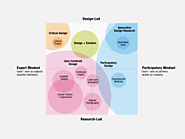
Design research is in a state of flux. The design research landscape has been the focus of a tremendous amount of exploration and growth over the past five to 10 years. It is currently a jumble of approaches that, while competing as well as complementary, nonetheless share a common goal: to drive, inspire, and inform the design development process.

On these pages, we offer you both original research and links to resources for the analyses of media content. Our resources cover the entire research process, covering the collection of data, its preparation of data for analysis, the selection of the analytical approach and its corresponding methodological tools.

Thematic analysis is a method for qualitative data analysis. We provide a wide range of resources related to learning and using thematic analysis.

Online QDA is a set of learning materials which address common issues of undertaking qualitative data analysis (QDA) and beginning to use Computer Assisted Qualitative Data AnalysiS (CAQDAS) packages. We aim to complement courses run by, for example, the CAQDAS Networking project, many independent trainers and the large number of undergraduate and postgraduate social sciences research methods training courses.

The importance of UX research to what the UX research landscape looks like.
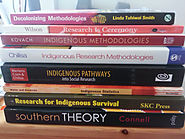
Because you do things in a sensible order, you have your research question, right? Good. It’s very important to have that first. The method (or methods) you choose should be the one (or ones) most likely to help you answer your question. You can’t figure out which methods are most likely to help if you don’t yet know what your question is. So if you’re actually not sure of your question, stop reading this RIGHT NOW and go settle your question, then come back and carry on reading.
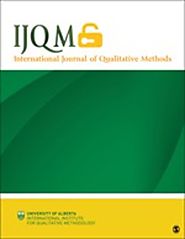
The International Journal of Qualitative Methods is the peer-reviewed interdisciplinary open access journal of the International Institute for Qualitative Methodology (IIQM) at the University of Alberta, Canada.
The journal was established in 2002 as an eclectic and international forum for papers reporting original methodological insights, study design innovations, and funded-project proposals using qualitative or mixed methods research that are useful to the global research community.

UX research - or as it’s sometimes called, design research - informs our work, improves our understanding, and validates our decisions in the design process. In this Complete Beginner's Guide, readers will get a head start on how to use design research techniques in their work, and improve experiences for all users.
Filmmaking research is part of the broader practice research paradigm – known as practice-led, practice-based and creative practice research – where films are created as research outputs in fiction, documentary and hybrid forms. Filmmaking researchers’ enquiries into production practices, techniques, modes and genres used in cinema, television and online have been successfully conducted using filmmaking as a primary research method. This paper sets out to explore the approaches used in filmmaking research that have been adopted in Australia and the UK, to identify the similarities and differences between the two research environments by looking at nine sample research projects.
The sample projects illustrate the diversity of films as research outputs, where some are made as a means of exploring theoretical perspectives, like “The Brisbane Line” (Maher 2011) and “Love in the Post” (Callaghan 2014). Others were created as part of larger interdisciplinary research projects, for example “Using Fort Scratchley” (Kerrigan 2008a) saw communication and history academics work together. With the series “Reducing Bullying: Evidence Based Strategies for Schools” (Wotherspoon 2006), social scientists and film production academics created a series of films used to initiate classroom discussions around acceptable social behaviours. The common element in the sample projects is that filmmaking was used as a research method, even though each project used a different methodology.
By presenting the historical approaches to filmmaking from a qualitative paradigm and illustrating a variety of contemporary research outputs generated through the creative practice paradigms, this paper discusses the unique research insights that can be gained from the position of a filmmaking-researcher. Discussing these perspectives helps build discipline knowledge about filmmaking practice as research and includes approaches that strengthen the insider’s perspective that a filmmaking-researcher can take.

Filmmaking as a creative practice is usually researched through film and cinema studies and screen production. Sometimes these two areas are conflated because screen production can be seen as a marginal subset of the larger body of cinema and film studies scholarly knowledge. By focusing on understandings of creativity, the foundations that have led to this scholarly relationship come into question and through an examination of theoretical and conceptual positioning of the filmmaker and the spectator this paper will offer a number of plausible reasons for this conflation. When scrutinized in this way a blind spot that has obstructed approaches to filmmaking creativity is revealed. By explaining creativity as a phenomenon that entails both film as product and film as a viewed experience, this paper will theoretically examine filmmaking as a creative practice by drawing on the seven levels of filmic reality known as the filmology, a term created by Etienne Souriau in the 1950s. Through this conceptual study, creative magnitude and scale will be used to illustrate the intimate and delicate relationship between spectatorship and filmmaking. Endorsing a systems view of creative filmmaking practice will reveal the blind spot and by clarifying the creative relationship between the filmmaker and the spectator the obscured view can be better appreciated.
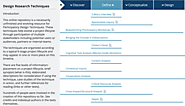
This online repository is a necessarily unfinished and evolving resource for Participatory Design Techniques. These techniques help evolve a project lifecycle through participation of multiple stakeholders including potential users or audiences, partners or internal teams.
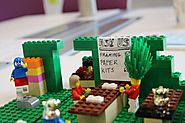
This page represents a growing list of application toolkits and other great resources for conducting design research, organized into General, Specific, and Thematic Tools.
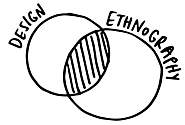
This ethnographic study of designing explores the relationship between the organizational surroundings of the design studio and the way in which design ethnography activities are accomplished, with a focus on the ways in which design practitioners are actively negotiating and redefining the perspectives they use to conduct research work. It proposes the twined cultures of reflexivity and conjecture as frameworks for understanding what it is that makes design ethnography so different, and for reconciling the integration of the ethnographic toolkit within the limitations of daily design practice. Based on findings from a para-ethnographic study of designers at work on an augmented reality project in a large studio, this paper explores the effects of framing design ethnography as research that looks both inward, and at the future – perspectives which serve to contradict traditional expectations of the vantage points offered by this methodological toolkit.
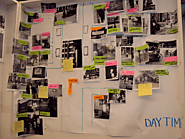
The first step in any UX process is to get to know the users. When you’re starting a project from scratch or moving into a new market, you may not have any experience with your users. Ethnographic res...
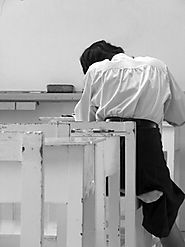
Welcome to a special issue of Networking Knowledge, focused on the role of practice in research across a broad range of disciplines. Practice-orientated methodologies (for example practice-led research, practice-based research, etc.) have become pertinent in recent years, alongside discussions about the nature of academic knowledge and perceived distinctions between theory and practice. Similarly, an increasing focus on the relationship between mind, body, and world has led to questions about the role of the researcher, and challenges to academia’s requirement for objectivity and ‘truth’.Studies increasingly acknowledge or embrace the presence of the researcher, or use the body itself as the means of doing research. In these studies, knowledge is both produced and received through the body, in a reflexive and iterative process.But while practice-led methodologies have promoted new ways of knowing through doing, they have also highlighted a number of epistemological questions:• How can theory and practice be integrated and used together holistically?• How can the merit of practice-led methods be judged within a quantitative academic framework?• How can practice-led research processes and outputs be understood as equivalent to –rather than supplementary to –the written word?• What are the limits of practice-led research?

Autoethnography is an approach to research and writing that seeks to describe and systematically analyze personal experience in order to understand cultural experience. This approach challenges canonical ways of doing research and representing others and treats research as a political, socially-just and socially-conscious act. A researcher uses tenets of autobiography and ethnography to do and write autoethnography. Thus, as a method, autoethnography is both process and product.
Ellis, Carolyn; Adams, Tony E. & Bochner, Arthur P. (2010). Autoethnography: An Overview [40 paragraphs]. Forum Qualitative Sozialforschung / Forum: Qualitative Social Research, 12(1), Art. 10, http://nbn-resolving.de/urn:nbn:de:0114-fqs1101108.
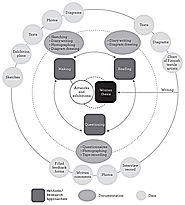
Over the last two decades, craft practice has played a considerable role in practice-led design research, especially as the subject and the vehicle for theoretical inquiry. This article aims to reveal how craft as a way of thinking through material can be incorporated into practice-led design research. The author’s completed dissertation exploring the expressivity of materials in textiles is used to demonstrate how craft can drive a practice-led research process and how research can enhance craft practice. The dissertation exemplifies how the author employed her own craft practice as the main method for design research. The method was utilized in relation to Merleau-Ponty’s and Heidegger’s phenomenology and the method of questioning viewers during two exhibitions featuring artifacts resulting from the author’s craft practice. Positioning craft practice in a research context can facilitate the reflection and articulation of knowledge generated from within the researcher-practitioner’s artistic experience, so that the knowledge becomes explicit as a written text or as a means of visual representation. Research can not only transform ways of designing or making artifacts, but also theoretically inform practice so that the practice can develop the practitioner’s aesthetic intelligence, the results of which are craft objects that can be understood more easily by viewers.

This post explains what a research paradigm is, which includes ontology, epistemology, theoretical framework and methodology, and why it is important for your research. It also explains the relationship between terms.

Plan out and finish your research proposal in no time using a mind map. Learn how to prepare it by following the steps described in this article. The examples generated by a mind mapping tool define each step.
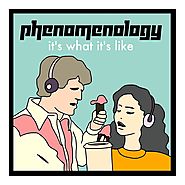
The phenomenological method aims to describe, understand and interpret the meanings of experiences of human life. It focuses on research questions such as what it is like to experience a particular situation. Susan Kozel, professor of new media at Malmö University, provides an excellent introduction to the topic in this lecture, which forms part of the course material for the Practice-Based Research in the Arts course offered by Stanford University in the USA.

Formulating a relevant research question is the most fundamental aspect of all artistic research. Excellent research is often distinguished from the mediocre in how the research question is put. From a negative point of view, the researcher must not use artistic liberty as an excuse to disregard her obligations as a researcher. From a positive view, a well formulated research question helps us gain new knowledge, it outlines the method, and it makes the artistic practice even more relevant than mere artistic interpretation. The presentation sets out to define the structure of artistic research questions and then discuss the exemplary research questions put through Sigurd Slåttebrekk’s and Tony Harrison’s reconstruction of Grieg’s piano playing. Finally, it will discuss how the musicologist can grasp artistic research.

Much has been written and discussed about the gap between design practice (industry) and theory (academia), and how to bridge that gap has become a major current preoccupation. Although professional and research designers appear to be narrowing that gap by increasingly working on collaborative projects, little has been actually done to marry those communities.

Dr Jodie Taylor is a Senior Lecturer, Postgraduate Supervisor and Curriculum Designer. Through the lens of critical pedagogy, Jodie’s praxis-orientated approach to education is guided by the desire to help students become aesthetically inspired, media literate, culturally sensitive, critical and creative thinkers.
She is the author of Playing it Queer: Popular Music, Identity & Queer World-making (Peter Lang 2012), and co-author of Redefining Mainstream Popular Music (Routledge 2013) and The Festivalisation of Culture (Ashgate 2014). She has published more than 30 scholarly articles & chapters on popular music, gender, sexuality and ageing; queer theory, youth culture and subcultural style; and ethical relations in ethnographic fieldwork.